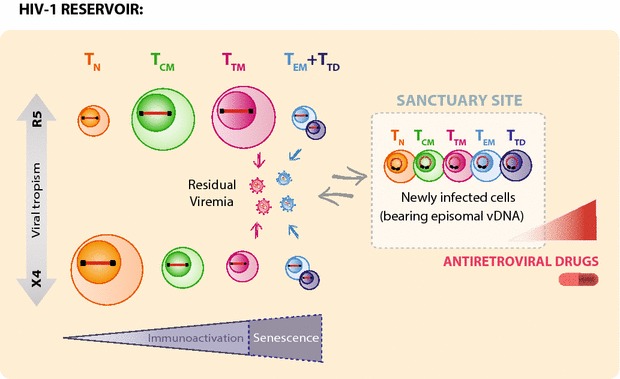Fig. 7.

Proposed model for the composition of HIV-1 reservoirs on ART. The relative contribution of each CD4+ T-cell subset to the total pool of infected cells during ART greatly depends on the history of viral tropism of the patient, as X4-tropism significantly increases the long-term reservoir in naïve CD4+ T cells. Regardless of the viral tropism, TTM and TEM+TD cells seem to be the main producers of residual viremia, despite the relative proportion of infected TEM+TD is invariably small. However, de novo infection of CD4+ T cells under suppressive ART is driven by viral populations poorly represented in residual viremia. Instead, cryptic viral replication presumably takes place in anatomical sanctuary sites (presumably at lymphoid tissue), where clonal activation, cell-to-cell transmission and suboptimal antiretroviral drug concentration might enhance the chances of new infection in all CD4+ T-cell subsets. Newly infected cells, identified because of their particularity of bearing episomal vDNA can then migrate to periphery and be detected in blood samples. It remains to be determined if plasma viremia discordance is determined by anatomical compartmentalization of productively infected cells (plasma virions may be produced by circulating CD4+ T cells or in a different anatomic location that is less susceptible to ART) or to an indirect effect of differential replicative capacity of proviral variants
